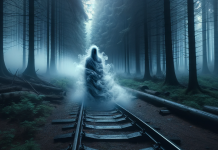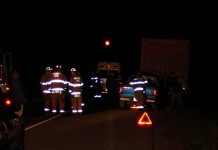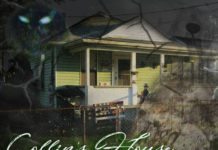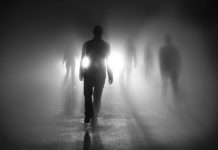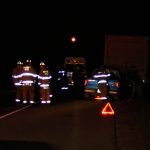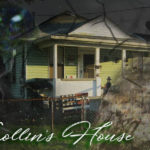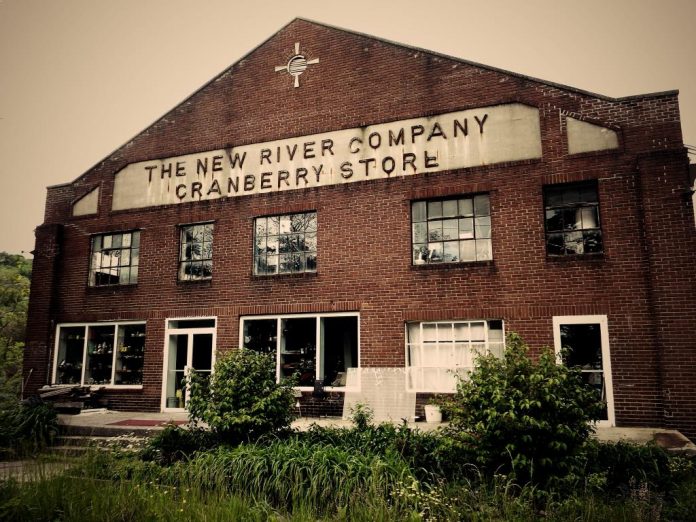
This story takes place in Cranberry West Virginia, just outside of Beckley. When I was young growing up in Cranberry it was a favorite pastime for all of the boys to walk the train tracks to Skelton and back. We would walk on the rail as long as we could and see who could walk the farthest without falling off. We would always stop in the summer at the trestle and take a dip in the creek.
After being gone way past supper one day my Momaw sent a neighbor to look for us. When he found us, he took each one of us home and told our parents what we were doing. Of course, that didn’t matter because a few days later we were right back on the tracks. As we were talking and walking the rails, we paid no attention that Paul (the man who found us and took us home a few days prior) was standing in the middle of the tracks. “I thought I told you, boys, to stay away from that trestle!” He was not angry he just seemed concerned.
He sat us down and told a story of a man who came to Cranberry looking for work back in the ’40s. No one knew who he was, but there was always work to be done in the mines. His name was Frank Easter. Paul told us about how much of a hermit he was, how he would talk to no one, and no one ever seen him after work. He lived in a single miner’s house behind the company store, but he was never there.
Paul then told us about how one day someone had seen something burning on the tracks just past the trestle early one morning. When a few men went to check it out they found it to be Mr. Easter. Nobody knew then or now how he ended up on the tracks and on fire. Some people had suggested that he had gone to Beckley and got drunk and while coming home he sat down on the tracks to rest. They had believed that he had lit his pipe that he always smoked and passed out resulting in the fire.
Paul took us down just a little ways past the trestle and showed us where Mr. Easter was found dead. To our amazement, there was the outline of a body burned in the cross-ties. The mark covered some five ties. Paul told us to feel the burn marks. We did. They were hot! Paul told us that Mr. Easter walked the tracks every night and every morning around 4:30 and a fire ignites in the same place where Mr. Easter died. Paul told us that Mr. Easter would touch people if they walked down the tracks and he would not let anyone walk over the place where he died. He said that Mr. Easter would push us off the trestle.
We just figured that Paul was trying to scare us and we continued to walk the tracks for the rest of our childhood. The only thing that changed was the fact when we came to Mr. Easter’s place we would move to the shoulder of the tracks until we passed.
When we had grown older, we still had the story fresh in our minds. One day we decided to check out the burned place. It was the middle of November, cold and snowy. When we reached Mr. Easters’ place the snow had covered up the tracks except for the place where Mr. Easter died. The outline of the body was there very clear. The dark charred cross-ties against the white snow will always be in my mind. The three of us smelled smoke. Woodsmoke. We all touched it, again it was hot. Scared and shaken we walked swiftly back toward home. After we reached the middle of the bend before the trestle, one of my friends looked back and stopped dead in his tracks. He said look! We all turned around. There at the place (as we call it) stood a man. He was pale, but never the less a man. He was wearing bank clothes (miners’ work clothes) and from his mouth hung a long crookneck pipe. He half waved to us and he was gone.
A few weeks later (when we could all finally discuss what happened), we talked to a few people about Mr. Easter. We were told the same story repeatedly of how he died. We were also told that he was buried in the graveyard on the hill atop the slate dump, behind what is now Cranberry Woods Apartments. We of course made the long trek up the slate dump weeks later to see his grave. Now in January with light snow on the ground, there was Mr. Easters grave the headstone dry with no snow covering it. The grave its self had no snow on the ground. We could not believe it. The other graves were snow-covered, but not Mr. Easters.
We were told by a Biology teacher from Woodrow Wilson High School, who came with us a few days later to check the grave out, that there were many different scientific reasons why the snow melts on a grave. He however had no explanation why Mr. Easter’s grave was the only one that this happened to. Now the years have passed on, but Mr. Easter still remains on my mind.
The train tracks in Cranberry were taken up a few years ago to make way for the ill-fated rails to trails project. When I heard the tracks were coming up I once more went to “the place” and felt the warmth of the cross ties, but this time I took two loose railroad spikes that were right beside the burn marks. After the tracks were taken away, it was reported that the gravel in the same exact place was blackened. I checked. It is. It also is hot just as the cross-ties were. Many walking the tracks at night now see Mr. Easter. The fire still burns at the same time in the morning. The cross-ties that were taken up sat in the number two holler for a long time, and it was witnessed that a man was seen setting on them at night.
As for the Railroad spikes, I still have them. They rest on a shelf in the living room. I have had friends and family pick up the spikes and in pure disbelief realize that they are hot. We even put them in the freezer one day, two hours later they were just as hot as ever.
I last visited Mr. Easters place two weeks ago when I was on vacation back in West Virginia. The gravel is still hot, and the outline of Mr. Easter’s body is still there. If you are in Cranberry sometime, check it out. Mr. Easter will not hurt you.
True West Virginia Ghost Stories eBook
Our complete story collection is now available as an 880 page digital ebook that you can download to your computer or mobile device. After downloading your copy of the ebook, you can read it anywhere without needing an internet connection.
... or feel free to make a contribution.

